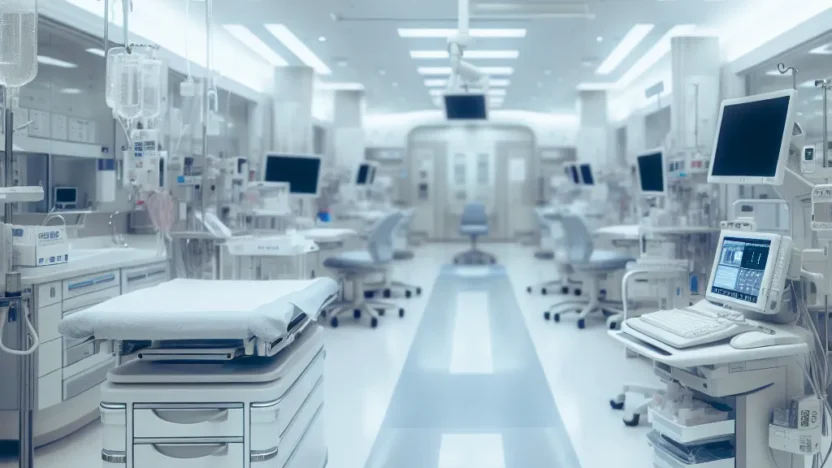Designing a Better Shift Report Room
Shift report room plays a crucial role in the healthcare environment, serving as a dedicated space where nurses can exchange vital information about patient care during shift changes. The quality of communication that occurs in this space directly impacts patient safety and the overall effectiveness of care delivery. In an era where healthcare is becoming increasingly complex, ensuring that the shift report room is designed to facilitate efficient communication and collaboration is essential. A well-organized and thoughtfully designed shift report room can enhance teamwork, reduce misunderstandings, and ultimately improve patient outcomes.

As nurses, we understand the importance of seamless communication during shift changes. The shift report room is not just a physical space; it represents a critical juncture in the continuum of care. A poorly designed room can lead to distractions, miscommunication, and a lack of focus on patient needs. Therefore, it is vital to consider various factors when designing or renovating a shift report room. This article will explore key elements that contribute to creating an effective shift report room, including layout and design, technology integration, fostering a culture of communication, and ensuring privacy and confidentiality.
Layout and Design of the Shift Report Room
The layout and design of the shift report room are foundational elements that can influence how effectively nurses communicate during shift changes. A well-thought-out space should prioritize accessibility and flow, allowing nurses to move freely and engage in discussions without interruptions. Ideally, the room should be located near the nursing station or patient care areas to minimize the time spent traveling between locations. This proximity not only fosters timely communication but also ensures that nurses can quickly respond to any urgent patient needs that may arise during the report.
In terms of physical design, the shift report room should be equipped with comfortable seating arrangements that encourage open dialogue. Round tables or semi-circular seating can promote a sense of equality among team members, making it easier for everyone to participate in the discussion. Additionally, incorporating sound-absorbing materials can help minimize background noise, allowing for clearer communication. Natural light and calming colors can also contribute to a more inviting atmosphere, reducing stress levels and making the space conducive to productive conversations.
Technology Integration in the Shift Report Room
In today’s digital age, integrating technology into the shift report room is essential for enhancing communication and information sharing. Utilizing electronic health records (EHR) systems can streamline the reporting process by providing real-time access to patient data, medications, and care plans. This integration allows nurses to reference critical information during handoffs, reducing the likelihood of errors and ensuring that all team members are on the same page regarding patient care.
Moreover, incorporating audiovisual tools such as screens or projectors can facilitate presentations or discussions about specific cases, enhancing understanding among team members. For example, visual aids can be particularly helpful when discussing complex patient histories or treatment plans. Additionally, providing access to telecommunication tools can enable remote participation, allowing off-site team members to join the shift report when necessary. By leveraging technology, the shift report room can become a more efficient and effective space for communication.
Fostering a Culture of Communication in the Shift Report Room
Creating a culture of communication within the shift report room is vital for ensuring that all team members feel comfortable sharing information and asking questions. This culture starts with leadership and should be reinforced through training and ongoing support. Encouraging an open-door policy where nurses can voice concerns or seek clarification can significantly enhance the quality of communication during shift changes. Regular team-building activities and debriefing sessions can also foster trust and camaraderie among staff, making it easier for nurses to engage in meaningful conversations during reports.
Additionally, implementing structured communication tools such as SBAR (Situation, Background, Assessment, Recommendation) can help standardize the reporting process. This framework provides a clear and concise way to convey important information, ensuring that nothing is overlooked during handoffs. By prioritizing a culture of communication, the shift report room can transform into a space where nurses feel empowered to share knowledge and support one another in delivering high-quality patient care.
Ensuring Privacy and Confidentiality in the Shift Report Room
Maintaining patient privacy and confidentiality is a fundamental aspect of nursing practice, and the shift report room must be designed with this in mind. Ensuring that the room is located in a discreet area can help minimize the risk of unauthorized individuals overhearing sensitive conversations. Additionally, implementing soundproofing measures can further protect patient information during discussions. It is essential to remind staff of the importance of confidentiality and to establish guidelines for discussing patient information within the shift report room.
Another critical aspect of ensuring privacy is the management of documentation and electronic devices. Providing secure storage for patient records and ensuring that electronic devices are password-protected can help safeguard sensitive information. Staff should also be trained on best practices for discussing patient care in a way that respects confidentiality. By prioritizing privacy and confidentiality, the shift report room can serve as a safe space for nurses to communicate openly about patient care while adhering to ethical standards.
FAQs about Shift Report Room Design
What are the key elements to consider when designing a shift report room?
When designing a shift report room, key elements to consider include the layout and flow of the space, technology integration, seating arrangements, soundproofing, and privacy measures. It is essential to create an environment that fosters open communication and collaboration among team members while ensuring that patient confidentiality is maintained.
How can technology improve communication in the shift report room?
Technology can significantly enhance communication in the shift report room by providing real-time access to patient data through electronic health records (EHR) systems. Additionally, audiovisual tools can facilitate discussions and presentations, while telecommunications can enable remote participation. By leveraging technology, nurses can share information more efficiently and effectively during shift changes.
What strategies can help foster a culture of communication among nursing staff?
Fostering a culture of communication among nursing staff can be achieved through various strategies, including encouraging an open-door policy, implementing structured communication tools like SBAR, and providing training and support for effective communication. Team-building activities and regular debriefing sessions can also help build trust and camaraderie, making it easier for nurses to engage in meaningful conversations during shift reports.
Conclusion
Designing a better shift report room is a multifaceted endeavor that requires careful consideration of layout, technology, communication culture, and privacy. By prioritizing these elements, healthcare facilities can create a space that enhances collaboration and improves the quality of patient care. A well-designed shift report room not only facilitates effective communication among nurses but also contributes to a positive work environment where staff feel empowered and supported. As we continue to navigate the complexities of healthcare, investing in the design of shift report rooms will play a vital role in ensuring that patient safety and care remain at the forefront of nursing practice.



